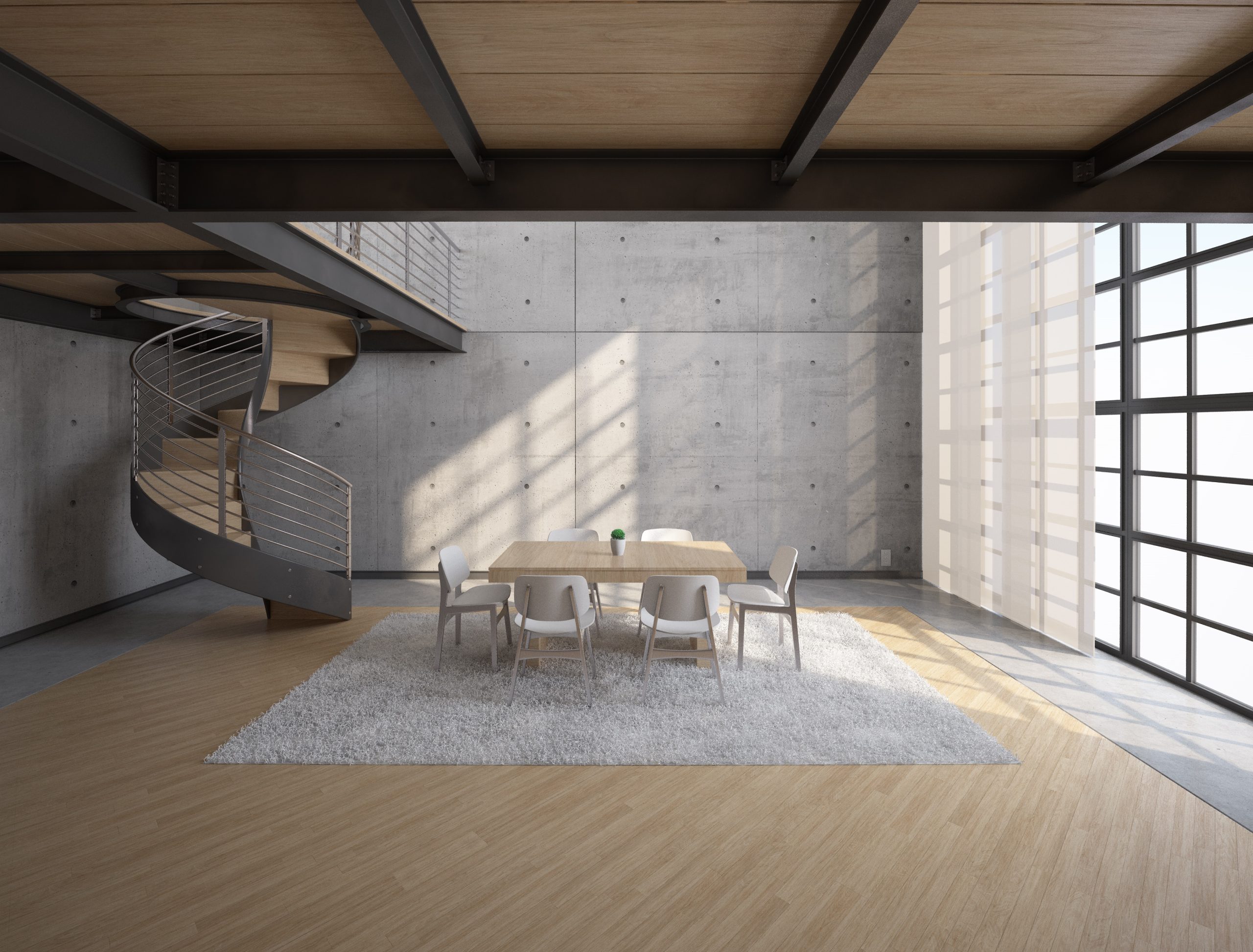
16 Oct What is the Difference Between Commercial and Residential Laminate Flooring?
Laminate flooring has proven itself as a versatile and cost-effective solution for a variety of settings. But did you know that not it’s all the same? That’s right, there’s a significant difference between commercial and residential laminate flooring. From material composition to durability, style, installation, and cost, each type has its own unique features.
Material Composition
Residential Laminate Flooring
In a residential setting, laminate flooring typically emulates the look of natural materials like wood, stone, or tile. This is achieved through a photographic layer applied over a core of high-density fibreboard. The final layer is a transparent protective coat designed to guard against regular household wear and tear.
Commercial Laminate Flooring
Commercial variants are built to last. They have to endure high levels of footfall, machinery, and day-to-day wear and tear. The top layer is often thicker than that of residential types and may even have added materials for extra durability. Some commercial laminate flooring comes with additional layers for soundproofing and thermal insulation, making them ideal for spaces like offices or retail shops.
Durability and Longevity
Residential Flooring Needs
Most people aren’t walking around their home in high heels or work boots all day long. Residential laminate flooring caters to a more relaxed environment, focusing on aesthetics and comfort. While it’s still durable, it isn’t engineered for high-traffic, high-stress situations.
Built for Business
Commercial laminate flooring is in it for the long haul. Expect these types to withstand consistent heavy footfall, machinery, and even the occasional workplace mishap. Often, commercial options come with extended warranties, which is a clear indicator of their durability.
Style Preferences
Personal Touch in Homes
For homes, there’s a vast selection when it comes to the look and feel of laminate flooring. Whether you want a rustic wood look, a sleek stone appearance, or even something more artistic, there’s likely a residential laminate that suits your taste. The flexibility in design lets you put your own stamp on your living space.
Function Over Form in Commercial Spaces
In contrast, commercial laminate flooring typically offers a more restricted range of design options. While still stylish, the choices are usually more conservative, leaning towards neutral colours and patterns. This is because the flooring needs to appeal to a broader audience and fit a wider range of décor themes.
Installation and Maintenance
Easy Installation at Home
Residential laminate flooring systems often use a simple “click-lock” design. This feature allows even those with minimal DIY experience to install their flooring without requiring nails or adhesives, saving time and potentially money.
Professional Setup for Commercial Areas
When it comes to commercial spaces, professional installation is often recommended. The subfloor needs to be perfectly level, and special adhesives are often used to ensure durability. Businesses can’t afford to close for days due to flooring issues, making professional installation a sound investment.
Cost Implications
Budget-Friendly Residential Choices
Cost is a big factor for most homeowners, and residential laminate flooring delivers. While it provides the appearance of more expensive materials like hardwood, it comes at a fraction of the cost, offering great value for money.
Cost-Effectiveness for Businesses
In a commercial setting, the upfront cost is usually higher due to the enhanced durability and installation complexities. However, the long-term benefits often make it more cost-effective. The reduced need for frequent replacements or repairs contributes to a better return on investment.
Additional Considerations
Health and Safety
In commercial spaces, slip resistance can be a significant factor. Commercial laminate flooring options often come with anti-slip properties to ensure the safety of employees and customers.
Environmental Impact
Both residential and commercial laminate flooring are available in eco-friendly options, using recycled materials or sustainable sourcing practices. If the environment is a concern for you, there are choices that align with your values.
Conclusion
Understanding the differences between commercial and residential laminate flooring is vital in making an informed decision for your flooring needs. While residential options offer style and ease of installation, commercial ones provide durability and long-term cost-effectiveness. Tailoring your choice to your specific needs will ensure your investment stands the test of time, whether it’s in your home or your business space.



